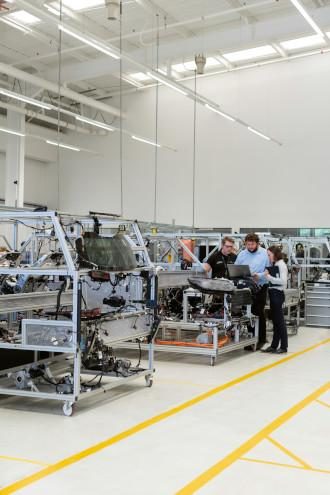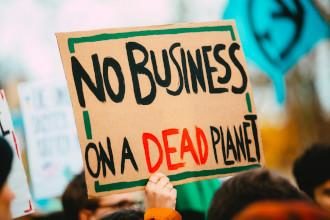By Harry Cooper – A sustainable competitive advantage is something businesses use to gain an edge over their competition in their industry through sustainable development.
These advantages can be any asset or feature of the business as long as it gives it a leg up against it’s competitors and is not easy for the competitors to replicate.
Businesses Helping Profit and Planet
One of the more effective ways of achieving a sustainable competitive advantage is by making a business more environmentally sustainable. Today, many consumers are looking for brands and companies that practice environmentally sustainable means of production.
These methods of production also help make the use of materials more efficient, which in turn saves money.
What Is A Sustainable Competitive Advantage?
As the name suggests, a sustainable competitive advantage must be both a sustainable advantage and a competitive advantage. But what exactly do these terms mean? A competitive advantage is an advantage that gives a company an edge over its competitors by making more profit. In order for an advantage to be truly competitive it must make the business or product genuinely have a higher quality in order to attract customers and shareholders.
However, it is often not enough for an advantage to be competitive. In order for an advantage to be a sustainable advantage as well, it must be something that other competitors in the industry can’t replicate easily, so that a business can sustain their advantage for longer, allowing them to make more profits over time.
Competitive Advantages
To create a competitive advantage, a company must make itself more desirable than the other companies on the market. There are three main strategies how a company to do this.
The first way is cost leadership, and is done by lowering the price of products. By making products that sell for a low cost, companies become more desirable to customers and profit more.
The second strategy for creating competitive advantages is through differentiation from the competing brand. This can be done by making very high quality products or by making products in a way that no one else in the industry is making them. However for the product to be differentiated from the competing products, it must be something that is noticeable to customers, so that they will be willing to buy it for a higher price.
The third of the three strategies involves focusing on a specific demographic in order to create a competitive advantage. This strategy requires a company to focus on making its products appeal to one or two types of customer. By focusing on those types of customer, companies are able to profit more from those specific groups of people.
Sustainable Advantages
While competitive advantages can help a company make more profits, there isn’t much stopping other companies on the market from doing the same thing. That’s where an advantage being sustainable comes in.
A sustainable advantage is one that is hard to replicate, so other competitors on the market are unable to catch up. There are many ways in which a company can make their advantages sustainable. An article in the Harvard business Review about sustainable competitive advantage details some examples of them.
Religious Sustainable Advantages
There are a growing number of companies that are carving out their place in the religious sustainability marketplace by creating products that appeal to religious dietary practices and sensitivity to the Earth.
A Guardian article from 2014 highlights a number of food providers that are providing food that meets Muslim dietary standards, i.e. Halal, while also doing so in a sustainable and ethical way, such as the Willowbrook Farm. In the Jewish world, companies like Grow and Behold and Kol Foods are providing Kosher pasture-raised meat.
More and more religious consumers are demanding sustainable, ethical food that fits with their religious values. This expanding market is a wonderful opportunity for producers to pursue a competitive advantage that is good for people and planet alike.
How to Make a Competitive Advantage Sustainable
One way suggested is through gaining superior access to resources. By finding easier ways to access the resources needed to create a product a company can make their products at a low cost and therefore lower their prices. This allows a company to maintain a lower price on their products without fear of their competition matching their prices.
Another way they suggest making a competitive advantage sustainable is through having better technology and methods for production. If a company is able to figure out a method of producing goods that allows it to produce more or higher quality goods for cheaper, they can patent that method, to prevent their competition from copying it. This allows a company to gain a competitive advantage based around differentiation or cost leadership that is also sustainable.
Environmental Sustainability Provides Sustainable Competitive Advantage
Sustainable competitive advantages don’t necessarily have to only benefit businesses. Converting companies to more environmentally sustainable business practices can also help create a sustainable competitive advantage.
As the need to solve environmental problems becomes more and more drastic, many people are calling on companies to abandon their unsustainable practices in order to adopt more environmentally friendly business tactics. What many people don’t realize, is that by conducting business more environmentally, businesses can achieve some sustainable competitive advantages.
Appealing to The Environmentally Conscious Customers
One of the more obvious competitive advantage to come from being environmentally friendly, is appealing to customers who care about the environment. A recent study done by GreenPrint shows that 78% of customers are more likely to buy products and services advertising themselves as environmentally friendly.
While it may seem like a business only needs to brand its services as green in order to target certain customers, the same survey found “53% of Americans never or only sometimes believe such claims. To trust a company statement, 45% of Americans say they need a third-party validating source”.
Therefore, a company cannot achieve a competitive advantage by simply putting a marketing focus on the large group of people who care about the environment. They must actually deliver on their claims rather than greenwashing their brand.
Getting Certified as a Green Business
An article in Waste Advantage Magazine lists some of the certifications a company can get for being an environmental business. Some examples of these are the Forest Stewardship Council, USDA Organic Seal, Green Seal, and Energy Star.
If a business could be successful in getting some of these certifications in a way that other businesses might not be in a position to do, such as by having access to greener technology, they would then be able to gain a sustainable competitive advantage.
Companies can use the strategy of making their marketing target the type of customer who cares about the environment. If they can make their products and services in a way that is environmental and hard to replicate, they could achieve a sustainable competitive advantage.
Sustainable Competitive Practices
Committing to to more environmentally friendly business practices can also be strategic for achieving business growth. By using resources more efficiently a company can the benefits of competitive advantages based around both cost leadership and differentiation.
If goods and services are produced sustainably, than they will allow for resources to be produced more easily and with greater quality. For example, a cotton farm in Egypt called Sekem committed to the innovation of being Egypt’s first organic cotton farm.
Overtime, as Sekem began to produce cotton sustainably, their non-industrial techniques were successful in improving the dessert soil quality. This turned the once arid dessert into farmable land with incredible value.
The Advantage of Making Products Sustainably
By using the green innovation of organic farming, Sekem was able to give themselves a significant leg-up in the Egyptian cotton market. By creating farmable land with better nutrient value, Sekem was able to gain benefits by “lowering the farm’s costs, improving average yields by almost 30%, and producing a raw cotton that was more elastic than its conventionally grown counterpart“.
This advantage gave Sekem the ability to make their brand the cheapest on the market through cost leadership. It also allowed them to use differentiation to make superior quality cotton to their other competitors on the market.
This is also a good example of an advantage that is sustainable as well as competitive. Because it is impossible to improve soil quality in such a way overnight, Sekem’s competitors will have a hard time replicating their techniques. This allows them to sustain their lead in the markets for longer.
* Featured image source






